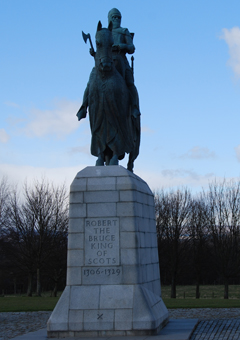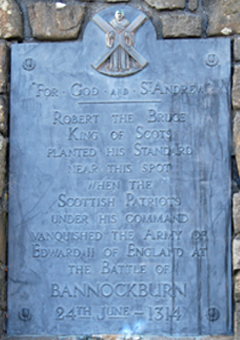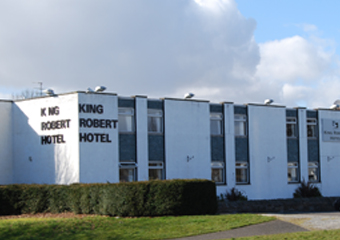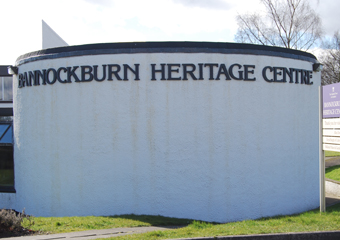
Robert The Bruce
Robert I, King of Scots
Robert I, King of Scots ( 11 July 1274 – 7 June 1329) was King of the Scots from 1306 until his death in 1329.
According to legend whilst he on the run in the winter of 1305 Robert hid himself in a cave on Rathlin Island off coast of Ireland, where he observed a spider trying to spin a web. Every time the spider failed, it started all over again. Inspired by this, Bruce returned to inflict a series of defeats on the English, thus winning him more supporters and eventual victory : "If at first you don't succeed, try try again."
Although his fathers family were of Norman heritage, his mothers family were Scots Gaels He became one of Scotland's greatest kings, leading Scotland during the Wars of Scottish Independence against England. He claimed the Scottish throne as a descendent of David I of Scotland.
His body is buried in Dunfermline Abbey, while his heart is buried in Melrose Abbey.
 Robert was the first child of Robert de Brus and Marjorie Countess of Carrick. His place of birth was probably Turnberry Castle in Ayrshire In 1295.
Robert was the first child of Robert de Brus and Marjorie Countess of Carrick. His place of birth was probably Turnberry Castle in Ayrshire In 1295.
In 1303, Edward King of England invaded Scotland, reaching Edinburgh, marching onto Perth. John Comyn, Guardian of Scotland, could not defeat King Edward's forces. King Edward stayed in Perth till July then marched to Aberdeen, arriving in August. From here he marched to Dunfermline. With Scotland now under occupation, all the leading Scots, except William Wallace, surrendered to King Edward in February 1304.
With Scotland defenseless, King Edward set about absorbing her into England. A parliament was held to elect those who would meet with the English parliament to establish rules for the governance of Scotland. For all the participation by Scots in the government, the English Crown held the real power.
During this time, William Wallace (Braveheart) was captured near Glasgow and executed on August 23 , 1305.
Robert the Bruce was crowned King of Scots as Robert I at Scone , near Perth on 25 March 1306 , by Isabella MacDuff , who claimed the right through her family, the Macduffs of Fife, to place the Scottish King on his throne. Though King, Bruce did not yet have a Kingdom.
In March 1309 Robert The Bruce held his first Parliament at St. Andrews, by August he controlled all of Scotland north of the River Tay. In 1310 the clergy recognised Bruce as King at a general council.
Bruce secured Scottish independence from England militarily — if not diplomatically — at the Battle of Bannockburn in 1314.
Robert Bruce's reign achieved. The Declaration of Arbroath of 1320 which strengthened his position, particularly with regards to the Papacy. In May 1328 King Edward III of England signed the Treaty of Edinburgh and Northampton , which recognised Scotland as an independent kingdom, and Bruce as its king.
Robert was succeeded by his only legitimate son, the infant David II . His son Robert II , succeeded David II and founded the Stewart dynasty. Bruce's descendants include all later Scottish monarchs and all British monarchs since the Union of the Crowns in 1603. A large number of families are descended from the Bruce.
| |
|
|
|
|
|
|
|

